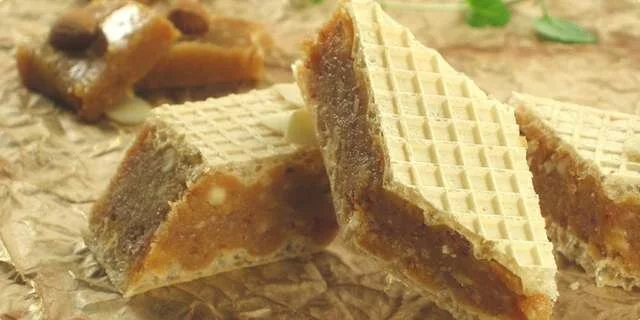Antique white walnut bars
A similar recipe has already been published, so I was in a dilemma whether to write just a comment or another version. The look in that grandmother's tekke was crucial - you see what they are called, and next to it it was added later - "very good". Well, if for my grandmother (who, if she were alive, she would be 105 now), these were old bars, then the recipe dates from 1800 and some… maybe a little modified, I don't believe that vanilla sugar was sold in that time. bags… and who knows, maybe it is…
Preparation steps
- Pour sugar and vanilla sugar into the unbeaten egg whites, then stir until you get a very, very firm mixture. Lemon juice add gradually, try, it should not be too sour.
- Separate about half of the mixture (lately I separate less than half), add ground walnuts and grated lemon peel to it, and knead the dough with a food processor.
- Flour the base and palms well (because the dough is very sticky), then form a long roller. I make two, it's easier for me to work with a smaller amount. Divide each with a rolling pin to the length of the bars, ie form a rectangle about 0.5 cm thick.
- Apply solid snow evenly to the dough, cut the bars with a knife and place them in a pan coated with butter and floured. Dip the knife in water before each cut.
- Dry the bars for about an hour in a lukewarm oven (for me it is 100 ° C), ie until the snow hardens. How they look just taken out of the oven, you can see here. They must not turn yellow, they must remain white.
Serving
In appearance, these bars remind me of snow-covered trees and any irregularity on them is beautiful to me. This is also a "romantic" reason why I don't apply snow with a syringe. "Practical" reason - I tried it once, but the white cap separated from the bars after drying, and the look seemed kind of "artificial".



